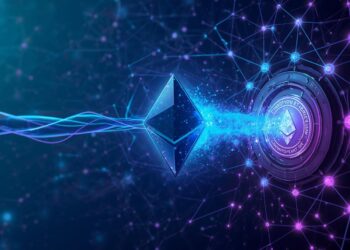In the world of Web3 and digital ownership, NFTs (Non-Fungible Tokens) have taken center stage. From digital art and collectibles to real estate and gaming assets, NFTs are redefining how we perceive ownership in the digital age. But there’s a key distinction that many newcomers overlook — custodial vs. non-custodial NFTs.
Understanding this difference isn’t just technical jargon — it can affect how secure, flexible, and empowering your NFT experience is. So, let’s unpack what each term means, how they differ, and why it matters for creators, collectors, and investors alike.
What Is a Custodial NFT?
A custodial NFT is one that is held and managed by a third-party platform or service provider on behalf of the user. When you buy, sell, or own a custodial NFT, the actual digital asset and sometimes even the associated wallet are controlled by the platform — not by you directly.
Think of it like this:
It’s similar to keeping your money in a bank. The bank holds and secures your funds, and you interact with it through an app or website. You don’t directly control the vault, but you trust the bank to do so.
Key Features of Custodial NFTs:
- The wallet and private keys are managed by the platform.
- Ideal for beginners who don’t want to worry about security.
- Usually comes with simpler onboarding (e.g., sign-up with email).
- Limited control over asset movement.
- More reliant on the platform’s security and policies.
Examples of Custodial Platforms:
- Nifty Gateway: Popular for curated art drops, handles custody for users.
- NBA Top Shot: Owned by Dapper Labs, uses Flow blockchain with custodial management.
- Coinbase NFT (in beta): Offers a simplified user experience through custodial services.
What Is a Non-Custodial NFT?
A non-custodial NFT is owned and managed directly by the user. You control the private keys, which means full ownership — and full responsibility. The NFT lives in a decentralized wallet like MetaMask or Trust Wallet, where no third party can restrict your access or take control.
It’s like storing cash in your own safe.
You have full control and can access or move it anytime, without needing approval from anyone. But if you lose the key to that safe (your wallet’s private key), no one can help recover it.
Key Features of Non-Custodial NFTs:
- You own the wallet and private keys.
- Maximum control and decentralization.
- No dependence on a centralized entity.
- Higher security risks if not managed properly.
- Ideal for experienced users and decentralization advocates.
Examples of Non-Custodial Platforms:
- OpenSea (with MetaMask): You connect your wallet directly and maintain control.
- Rarible: Works seamlessly with non-custodial wallets.
- Zora: A protocol-based NFT platform prioritizing decentralization.
Custodial vs. Non-Custodial NFTs: Key Differences
| Feature | Custodial NFTs | Non-Custodial NFTs |
|---|---|---|
| Ownership | Held by the platform | Held by the user |
| Security Control | Platform-controlled | User-controlled |
| Access Recovery | Easier (email, support) | Harder (lost keys = lost access) |
| Ease of Use | User-friendly | Slightly technical |
| Flexibility | Limited (restricted transfers) | Full freedom (peer-to-peer transfers) |
| Dependence | Relies on third party | Fully decentralized |
| Best For | Newcomers to crypto/NFTs | Crypto-native users |
Pros and Cons
Custodial NFTs
Pros:
- Simple onboarding process (no wallet setup required).
- Better customer support.
- Safer for users unfamiliar with crypto.
- Easier recovery options.
Cons:
- Not truly “self-owned.”
- Risk if the platform shuts down or gets hacked.
- Transfers might be limited or delayed.
Non-Custodial NFTs
Pros:
- True ownership and control.
- Uncensorable and portable across platforms.
- Ideal for DeFi and Web3 use cases.
Cons:
- Steeper learning curve.
- Risk of losing assets if keys are lost.
- Requires personal security management.
Why This Difference Matters
For Creators:
If you’re an artist or game developer, understanding custody helps you choose the right platform. Custodial platforms often offer greater exposure and ease of use but may limit your control or flexibility.
For Collectors:
Serious NFT collectors often prefer non-custodial ownership because it ensures their digital assets aren’t locked in a platform they don’t control.
For Security:
Non-custodial NFTs align more with the decentralized ethos of blockchain. If privacy and autonomy are your priorities, this is the way to go. But if convenience and simplicity are more important to you, custodial platforms may be the better fit.
Use Cases in the Real World
Gaming:
- Custodial: A game like NBA Top Shot offers an app-like experience with NFTs behind the scenes.
- Non-Custodial: Games like Axie Infinity allow players to trade characters freely on any compatible marketplace.
Digital Art:
- Custodial: A user buys an NFT on Nifty Gateway with just a credit card and email.
- Non-Custodial: An artist mints work on Foundation or Manifold and sells directly through their wallet.
Finance:
Non-custodial NFTs are increasingly being used as collateral in DeFi protocols — a use case not feasible with custodial NFTs due to access limitations.
The Future of NFT Custody
The line between custodial and non-custodial is beginning to blur with the rise of smart custody solutions and hybrid models. Some platforms now offer self-custody wallets embedded into custodial ecosystems, allowing users to eventually “graduate” into full ownership.
Account abstraction — a concept where wallets become smarter and more user-friendly — is also making non-custodial solutions more accessible.
In the future, users may not even need to worry about terms like “custodial” or “non-custodial.” Instead, the focus will shift to usability, security, and interoperability.
Final Thoughts
So, custodial vs. non-custodial NFTs — what’s better?
The answer depends on your goals and experience.
- If you’re new to crypto, custodial NFTs offer a gentle introduction.
- If you’re a Web3 enthusiast seeking full control and flexibility, non-custodial is the way to go.
Both models play an important role in the NFT ecosystem. The key is understanding the trade-offs and making an informed choice that aligns with your comfort level and values.
As Web3 matures, more bridges between the two models will emerge, giving users the best of both worlds. Until then, the choice is yours — custody or control?
Join Us : Twitter | Website | GitHub | Telegram | Facebook | YouTube

























